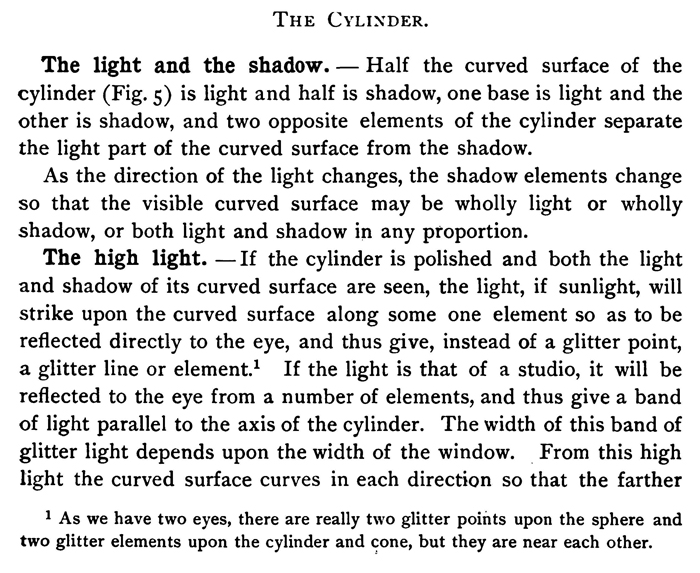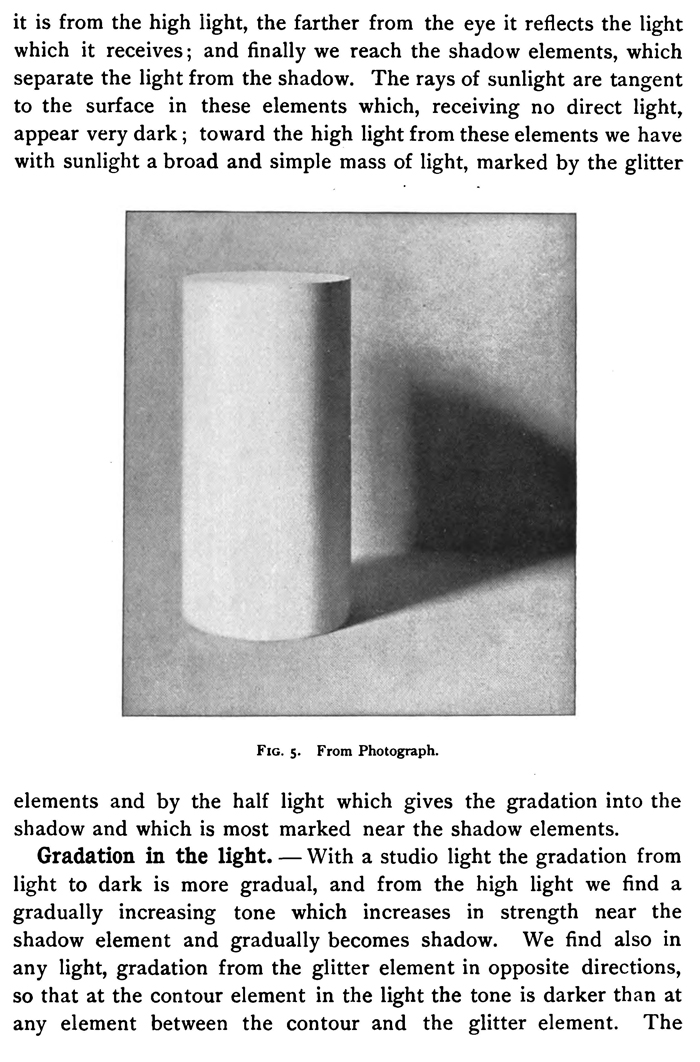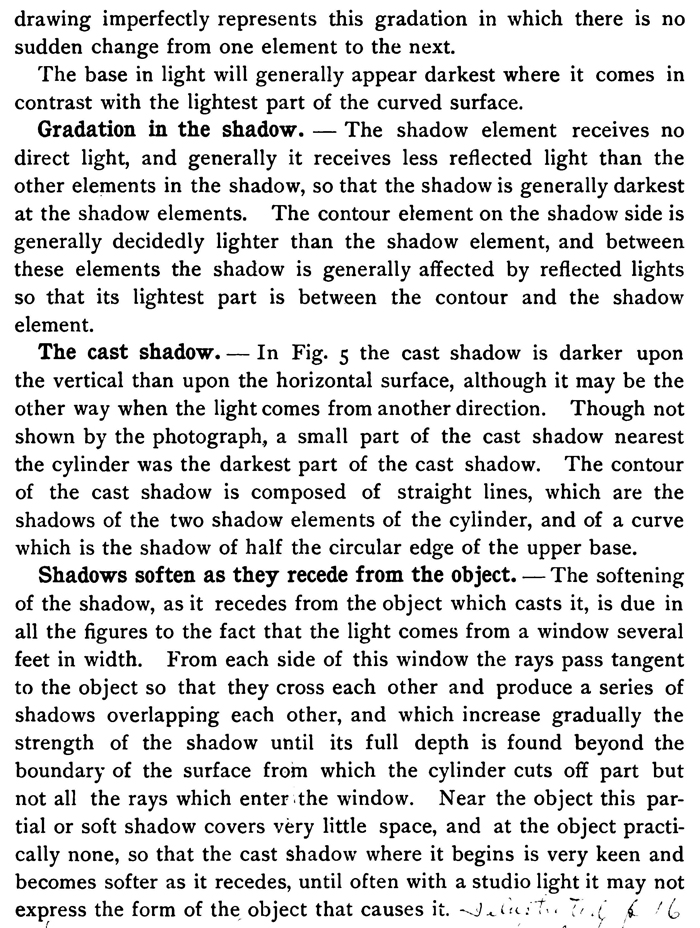Home >Directory of Drawing Lessons > Drawing Objects & Things > Geometric Shapes > Cylinders > How to Draw Light and Shadow on Cylinders
CYLINDERS DRAWING LESSON : How to Draw Light and Shadows on Cylinders & Tubes
|
|
The above text is actually made up of images, so if you need to copy some of the text...you can find it below. THE CYLINDER.The light and the shadow. Half the curved surface of the cylinder (Fig. 5) is light and half is shadow, one base is light and the other is shadow, and two opposite elements of the cylinder separate the light part of the curved surface from the shadow. The high light.If the cylinder is polished and both the light and shadow of its curved surface are seen, the light, if sunlight, will strike upon the curved surface along some one element so as to be reflected directly to the eye, and thus give, instead of a glitter point, a glitter line or element.' If the light is that of a studio, it will be reflected to the eye from a number of elements, and thus give a band of light parallel to the axis of the cylinder. The width of this band of glitter light depends upon the width of the window. From this high light the curved surface curves in each direction so that the farther it is from the high light, the farther from the eye it reflects the light which it receives; and finally we reach the shadow elements, which separate the light from the shadow. The rays of sunlight are tangent to the surface in these elements which, receiving no direct light, appear very dark ; toward the high light from these elements we have with sunlight a broad and simple mass of light, marked by the glitter elements and by the half light which gives the gradation into the shadow and which is most marked near the shadow elements. Gradation in the light.With a studio light the gradation from light to dark is more gradual, and from the high light we find a gradually increasing tone which increases in strength near the shadow element and gradually becomes shadow. We find also in any light, gradation from the glitter element in opposite directions, so that at the contour element in the light the tone is darker than at any element between the contour and the glitter element. The drawing imperfectly represents this gradation in which there is no sudden change from one element to the next. The base in light will generally appear darkest where it comes in contrast with the lightest part of the curved surface. Gradation in the shadow.The shadow element receives no direct light, and generally it receives less reflected light than the other elements in the shadow, so that the shadow is generally darkest at the shadow elements. The contour element on the shadow side is generally decidedly lighter than the shadow element, and between these elements the shadow is generally affected by reflected lights so that its lightest part is between the contour and the shadow element. The cast shadow.In Fig. 5 the cast shadow is darker upon the vertical than upon the horizontal surface, although it may be the other way when the light comes from another direction. Though not shown by the photograph, a small part of the cast shadow nearest the cylinder was the darkest part of the cast shadow. The contour of the cast shadow is composed of straight lines, which are the shadows of the two shadow elements of the cylinder, and of a curve which is the shadow of half the circular edge of the upper base. Shadows soften as they recede from the object.The softening of the shadow, as it recedes from the object which casts it, is due in all the figures to the fact that the light comes from a window several feet in width. From each side of this window the rays pass tangent to the object so that they cross each other and produce a series of shadows overlapping each other, and which increase gradually the strength of the shadow until its full depth is found beyond the boundary of the surface from which the cylinder cuts off part but not all the rays which enter the window. Near the object this partial or soft shadow covers very little space, and at the object practically none, so that the cast shadow where it begins is very keen and becomes softer as it recedes, until often with a studio light it may not express the form of the object that causes it.
|
Privacy Policy ..... Contact Us







